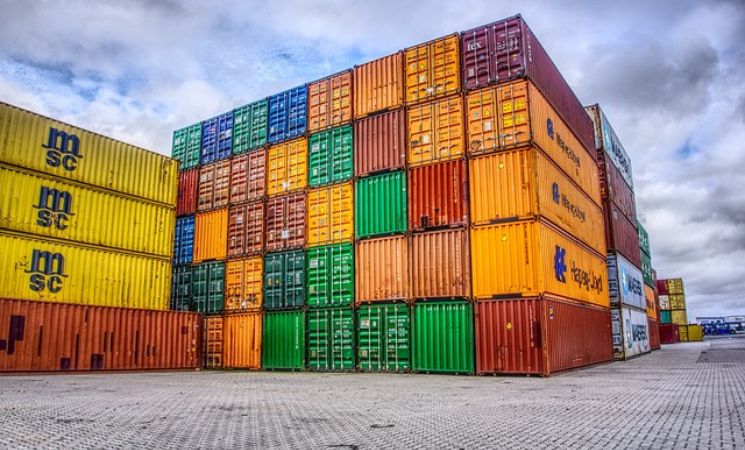Finding ways to reduce costs while maintaining efficiency is very important. One area that can significantly impact your bottom line is container management. Whether you’re in manufacturing, retail, or logistics, implementing efficient container solutions can lead to substantial savings. In this article, you will learn the ten tips to help you optimize your container use and reduce costs.
1. Evaluate Your Current Container Usage
Begin by looking closely at the containers already in use. Find out which ones are frequently needed and which ones rarely see action. This check can reveal containers that aren’t being fully utilized. Identifying these underused containers opens doors for better resource management. Adjusting usage patterns can lead to cost savings. Consider setting a schedule for regular evaluations to keep track.
2. Standardize Container Types
Using uniform container sizes can make managing inventory easier. When all containers are the same size, sorting and storing becomes straightforward. Fewer container types streamline operations and cut down on costs. Thus, standardized containers can lead to efficient packing during shipments. This helps to reduce confusion and makes training staff simpler. Consider the long-term benefits of this approach.
3. Implement Container Tracking Systems
Investing in tracking technology can provide a clearer picture of container locations. Options like RFID tags or GPS help keep tabs on containers in real-time. With this visibility, it becomes easier to prevent loss and ensure timely returns.
Also, tracking also aids in optimizing container routes. Knowing where containers are can improve delivery times and customer satisfaction. Embracing these systems enhances overall efficiency. Consider these tools as a valuable asset for container management.
4. Optimize Container Design
Rethinking container design can lead to better efficiency. Lightweight materials or collapsible designs save space during transport. Having this optimization allows for more items to fit in each shipment, cutting shipping costs. Thoughtful design also reduces storage space needs.
Smaller, more efficient containers can lead to fewer trips and lower fuel costs. Evaluate existing designs and identify areas for improvement. Enhanced designs promote sustainability by minimizing waste. So, innovation in design can significantly impact cost savings.
5. Train Employees on Container Handling
Offering training sessions on proper container handling pays off. Staff can learn the best practices for packing and stacking containers, including those for Containers New Zealand. Well-trained employees also optimize space during loading and unloading.
Always remember that training fosters a culture of efficiency and care. Consider holding regular workshops to keep skills fresh. Providing hands-on experience can boost confidence. Plus, an educated workforce leads to smoother operations and cost savings.
6. Collaborate with Suppliers
Building strong relationships with suppliers can enhance container management. Working together allows for better coordination of container deliveries and returns. This collaboration helps lower transportation costs through shared logistics. Ensuring every container serves its purpose improves the container utilization
Additionally, regular communication keeps suppliers on the same page. Discussing container needs and delivery schedules leads to smoother operations. Joint efforts can uncover innovative solutions to common challenges.
7. Embrace Reusable Containers
Switching to reusable containers can lead to significant long-term savings. Although reusable containers may cost more initially, the benefits outweigh the drawbacks. Reusable options reduce waste and eliminate the need for single-use containers.
Consider developing a system for collecting and cleaning reusable containers. The durability of these containers often leads to fewer replacements over time. Implementing this practice encourages sustainable business practices.
8. Monitor Inventory Levels
Keeping a close watch on container inventory helps avoid excess stock. Regular checks ensure that the right number of containers is available when needed. Adjustments can be made based on demand, leading to better resource allocation.
Establish a system for tracking inventory levels efficiently. Utilize technology to automate these checks if possible. This approach fosters proactive management of resources. If you have a well-managed inventory, it promotes smoother operations and cost efficiency.
9. Check Transportation Methods
Reviewing transportation methods can uncover ways to maximize container efficiency. Consider consolidating shipments to minimize the number of trips. Exploring cost-effective shipping options can yield significant savings.
Analyzing delivery routes and timing can enhance overall logistics. Collaborating with transportation providers may lead to better deals. Assessing current practices allows for continuous improvement. Small adjustments in transportation can lead to big savings.
10. Regularly Review Container Costs
Conducting regular reviews of container-related costs is essential. Tracking expenses helps identify trends and areas for improvement. Making adjustments based on this analysis can lead to enhanced efficiency.
Plus, you must consider establishing a routine for these reviews, such as quarterly assessments. Engaging different team members in this process can provide fresh insights. Being proactive about container costs keeps budgets in check. Continuous monitoring ensures that savings opportunities do not go unnoticed.
Streamline Containers, Maximize Savings!
By following these tips, businesses can effectively reduce costs associated with container solutions while enhancing operational efficiency. Streamlining container usage not only saves money but also contributes to a more sustainable and environmentally friendly approach to logistics and supply chain management.












